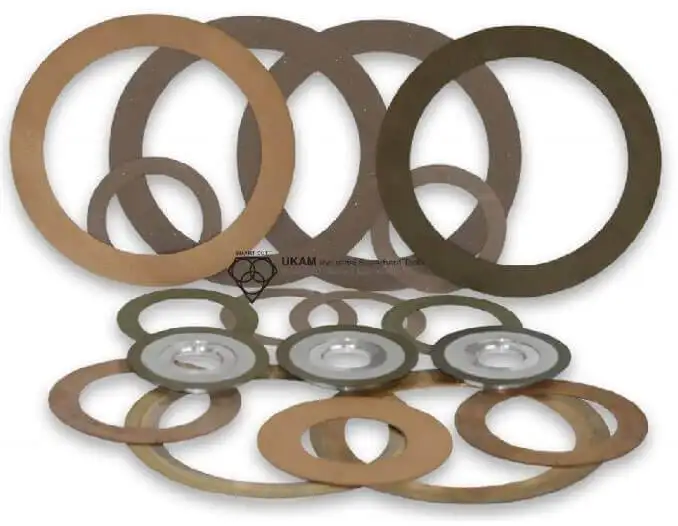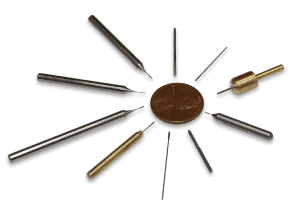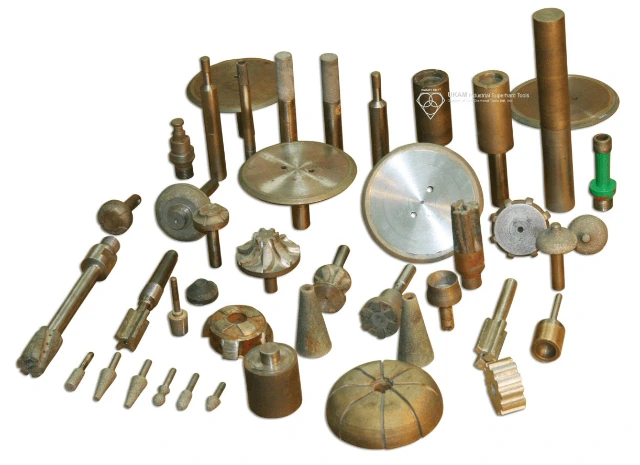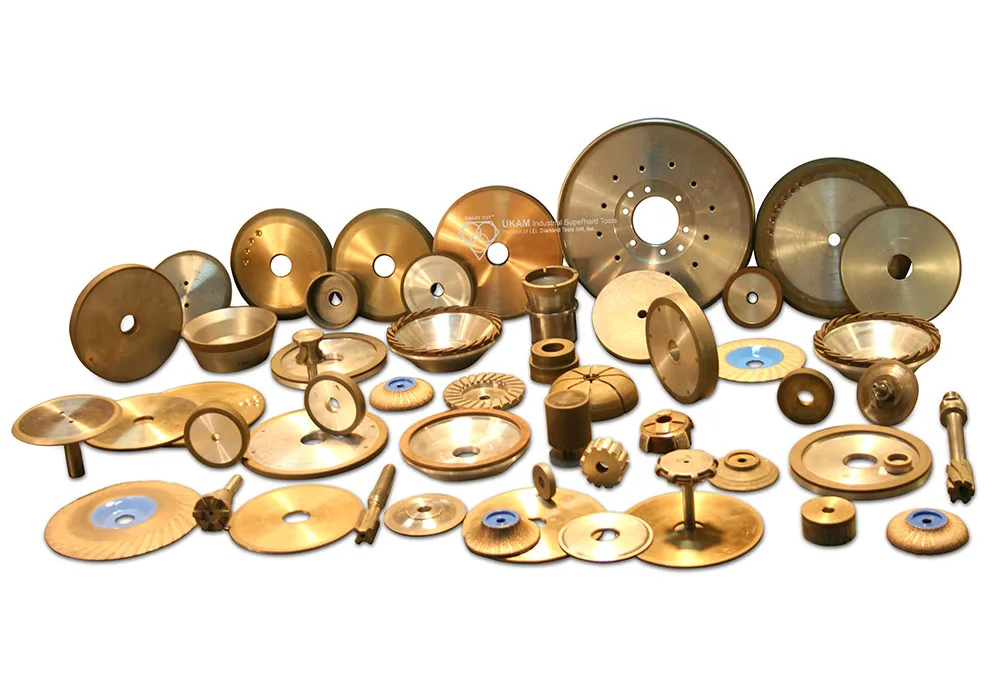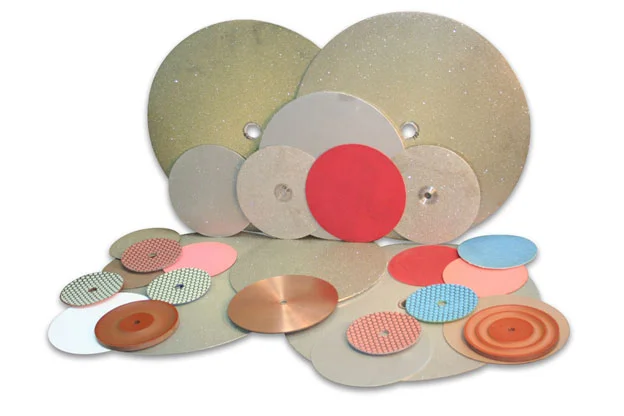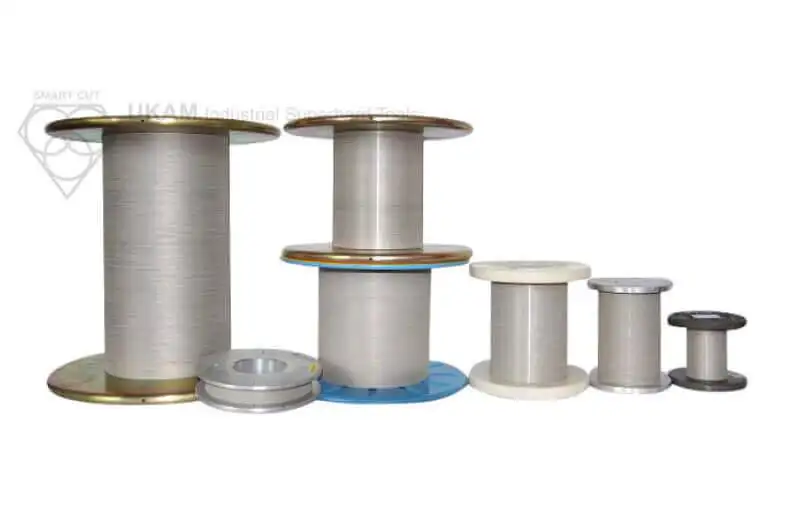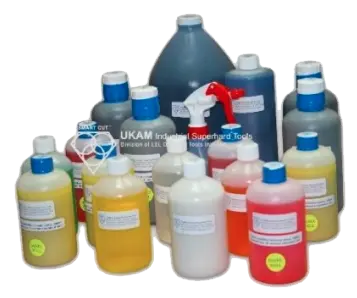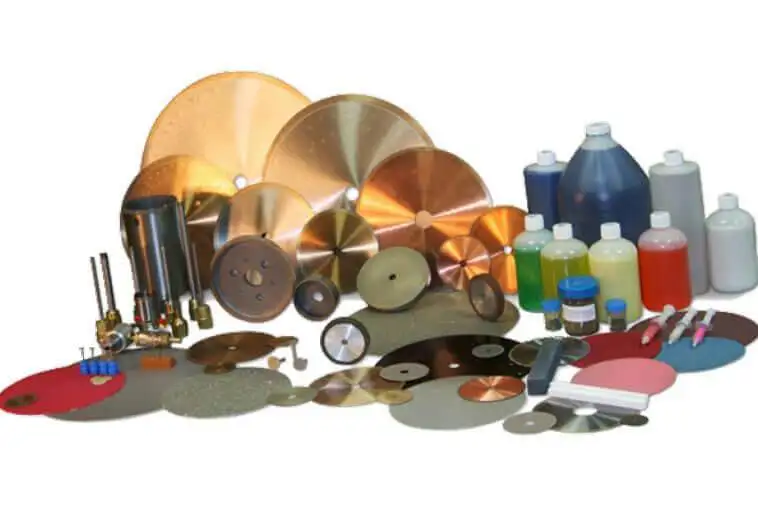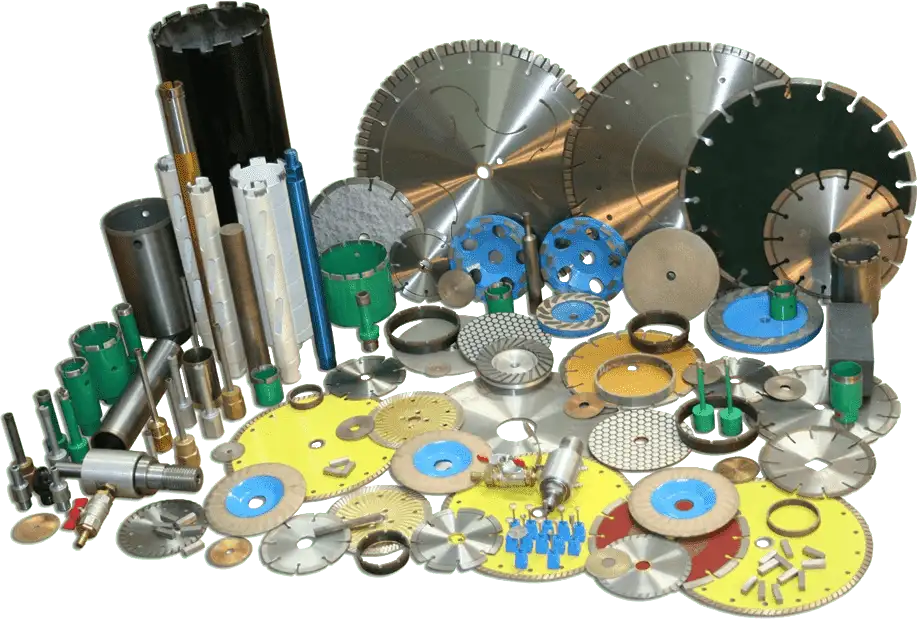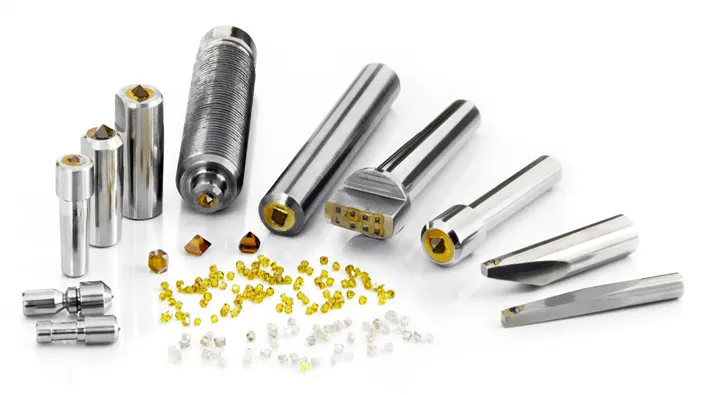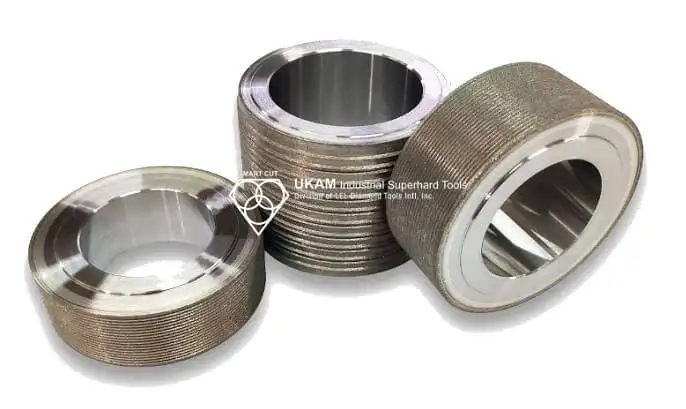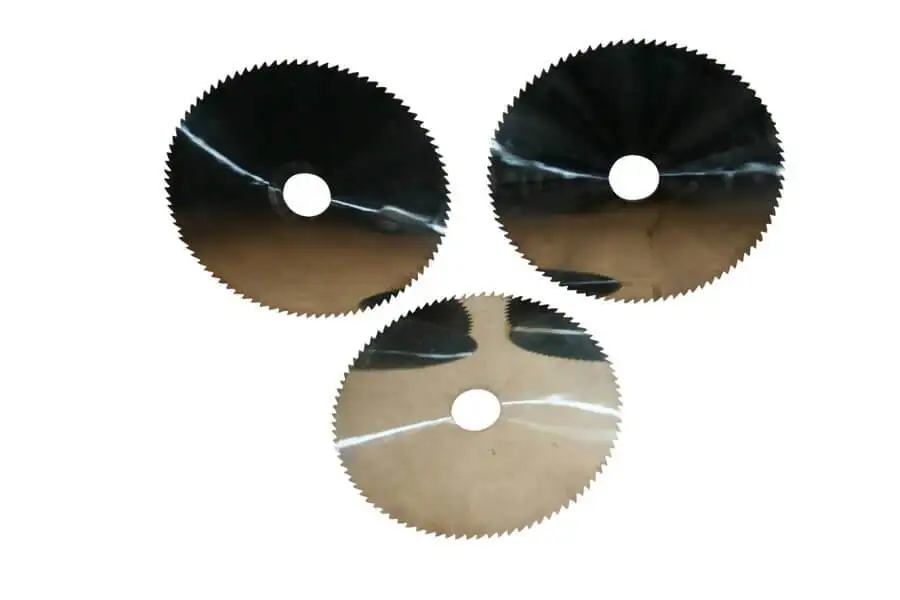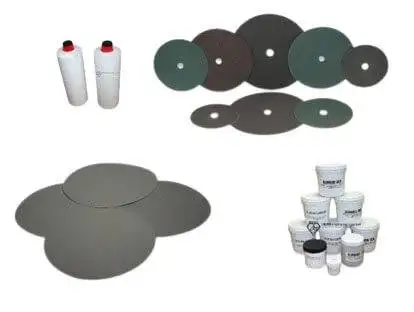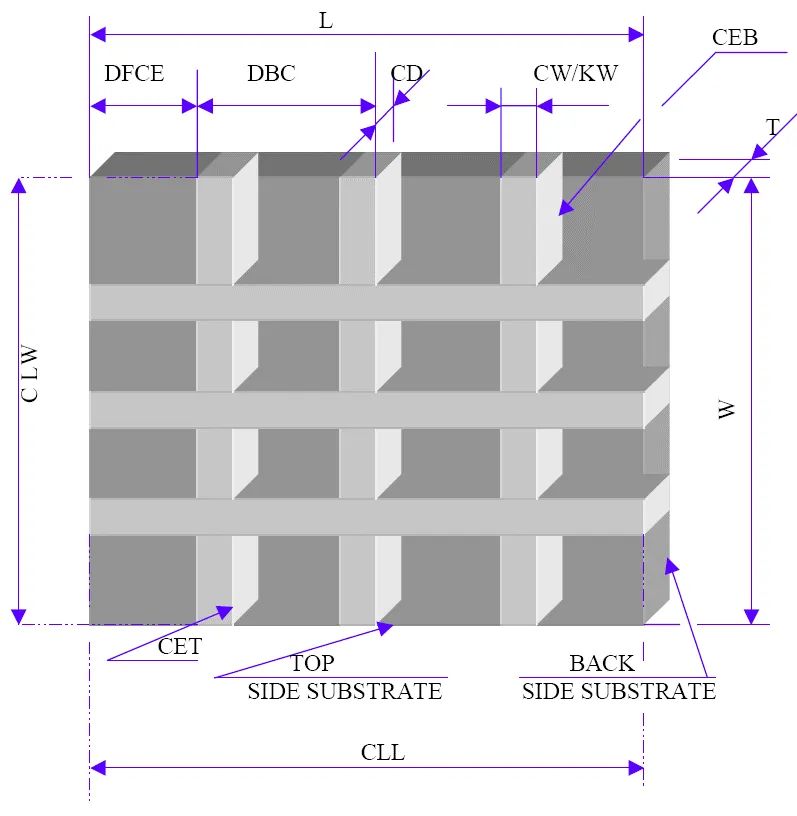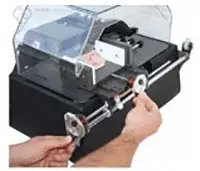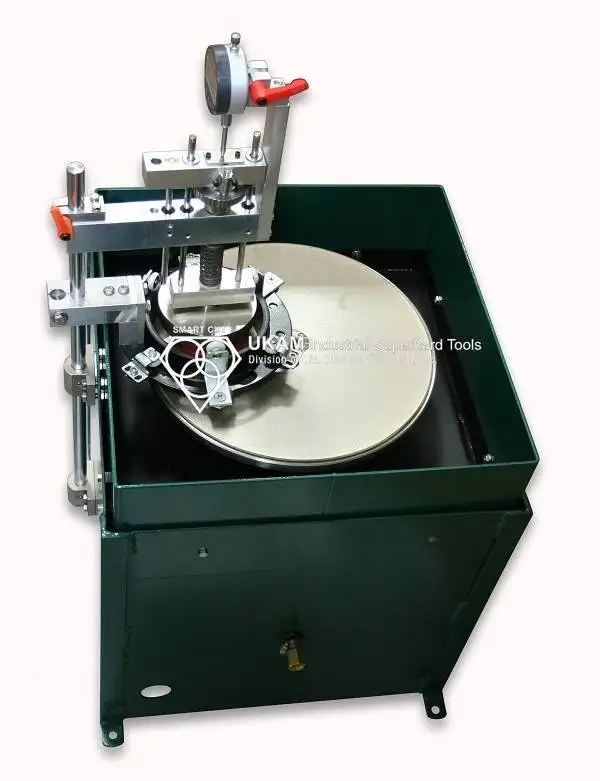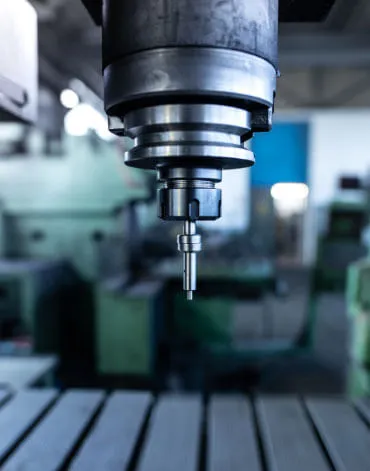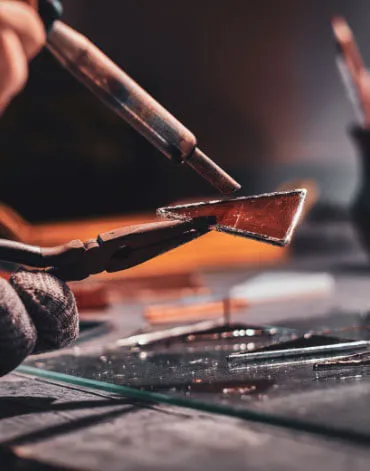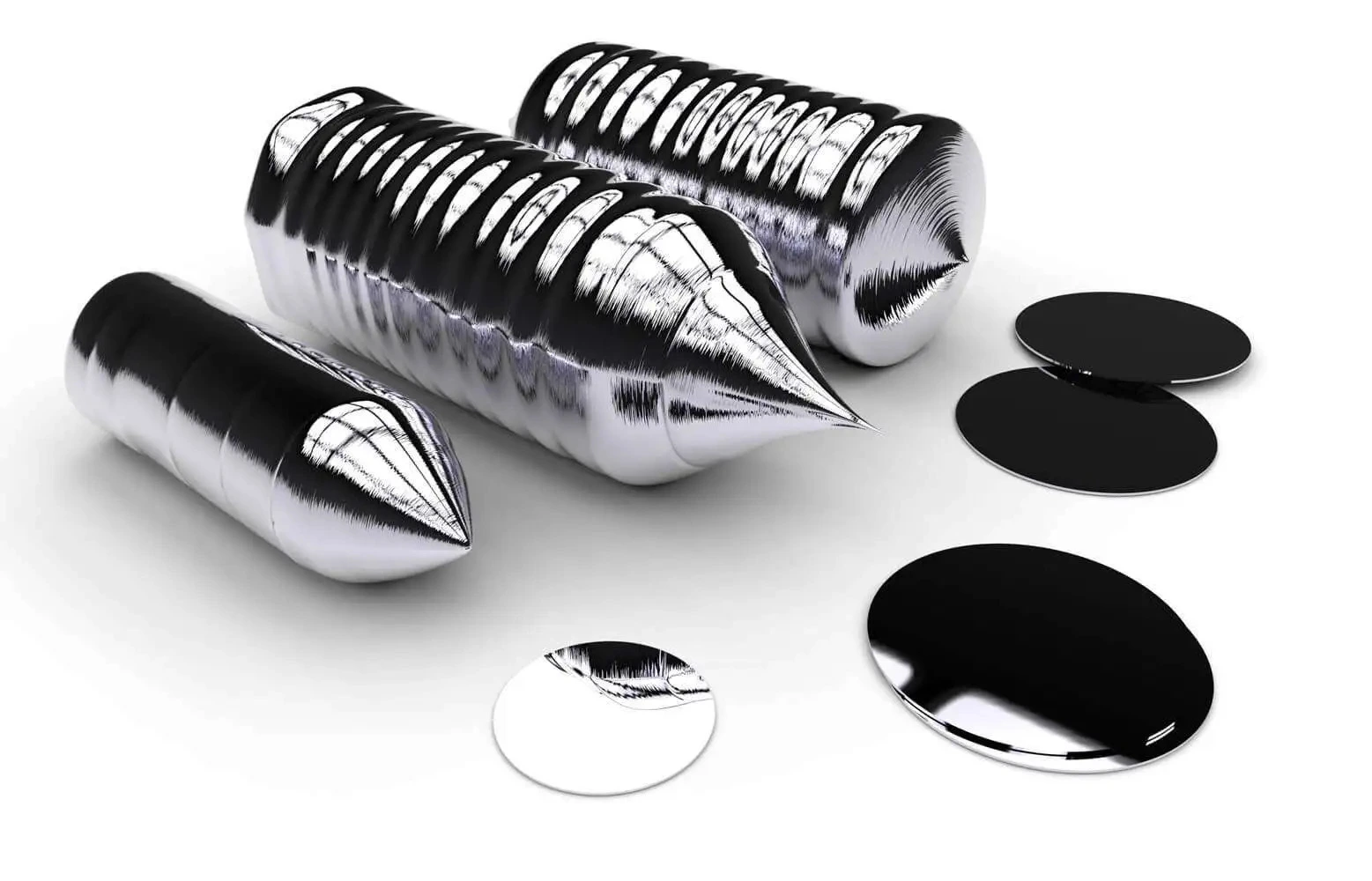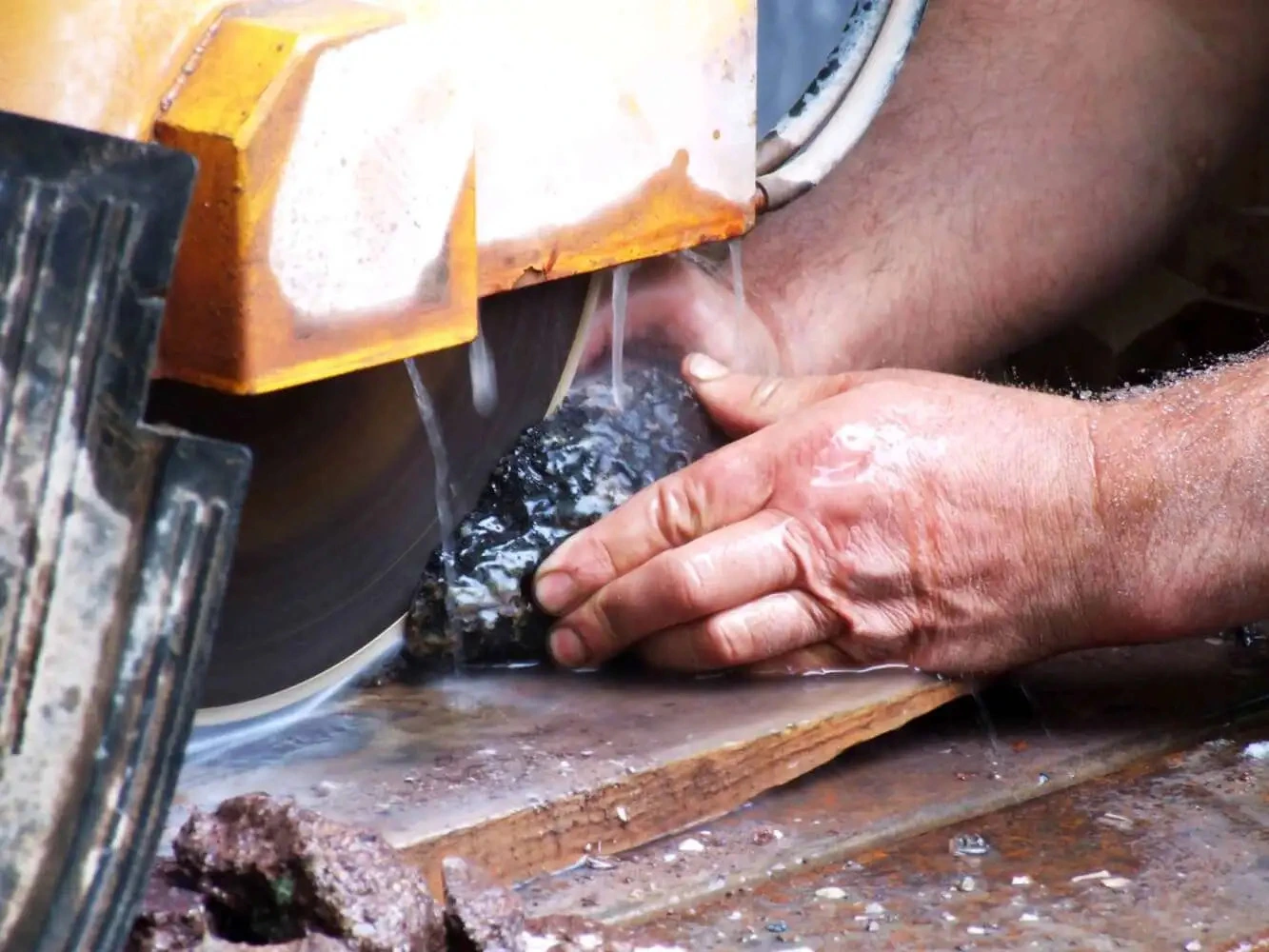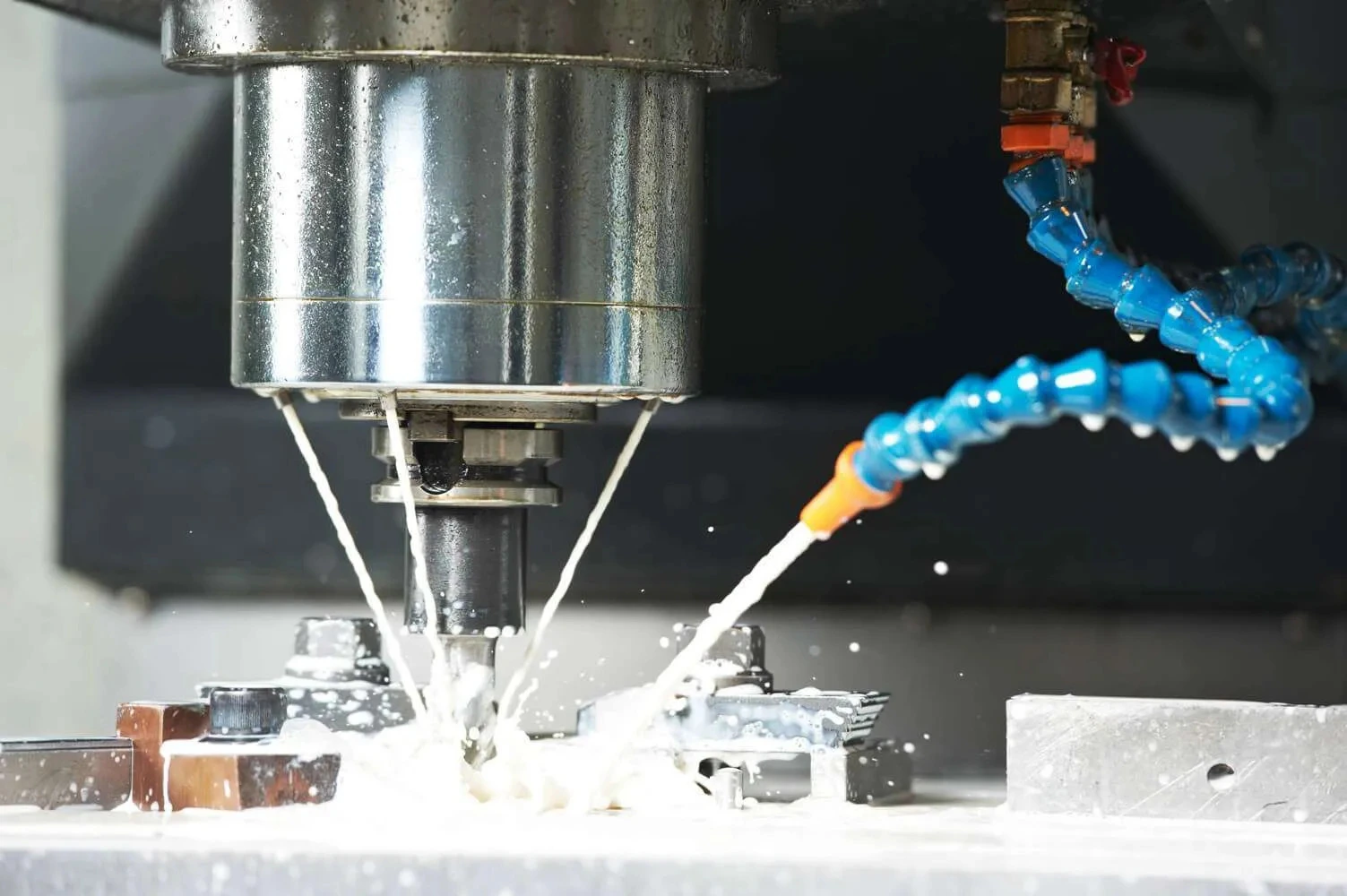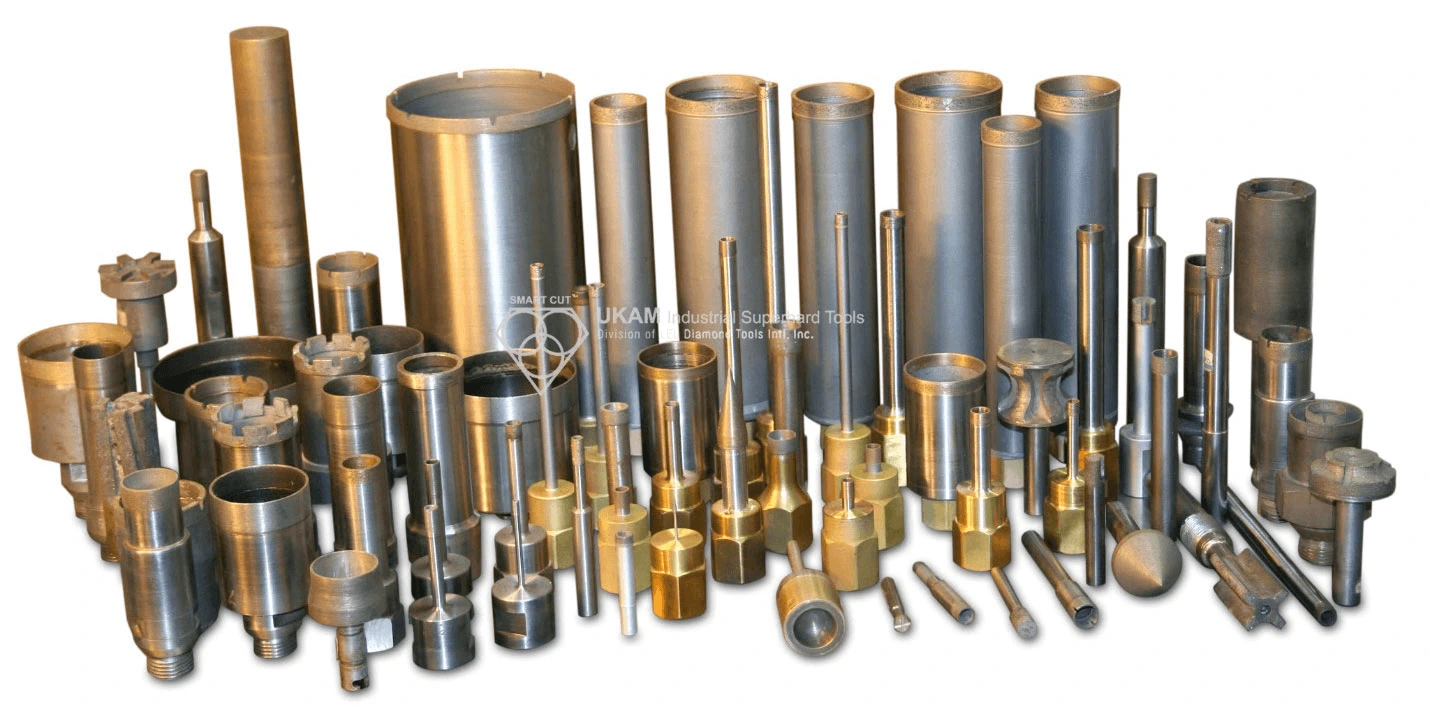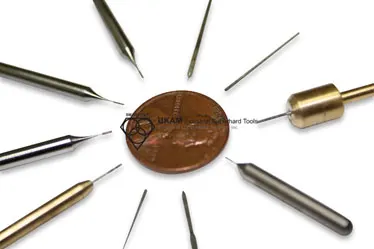Optimizing your Diamond Drilling Operation
-
Posted by
 Ayan Sadyk
Ayan Sadyk

There are numerous factors that influence the performance of diamond drills. Understanding these factors helps users select the appropriate diamond drill specifications for their specific applications, optimizing drilling operations to achieve maximum efficiency. The purpose of this article is to illustrate that each variable in the diamond drilling process is only one component of a larger drilling system. Adjusting one element or variable in the drilling process cannot achieve efficiency by itself. Only when all components of the system are properly integrated can the desired outcome be obtained.
Similar to a mathematical equation, a single improperly selected variable or component can disrupt the entire drilling system. This can lead to inefficiency, even
if the rest of the system is correctly configured. Many users approach diamond drilling with incorrect or incomplete information. This can result in the selection of suboptimal drilling parameters, leading to reduced efficiency and performance.
Thus, understanding the interconnected nature of these factors is crucial for achieving optimal results with diamond drills. By comprehending the broader system and its variables, end users can ensure their diamond drilling operations are as effective as possible.
Errors can occur during the setup phase of diamond drilling, often due to skipping critical steps or overlooking essential details. When issues arise, many operators tend to address the symptoms rather than the root cause, leading to frustration and a misdirected focus. For instance, some attribute problems to the diamond drill itself, while the underlying cause might be as simple as incorrect pressure or misaligned coolant flow.
A solution to what some consider a severe problem could be straightforward. It might involve adjusting the pressure, reorienting the coolant's direction, altering the drill's rotational speed (RPM), or ensuring the correct mounting method. Educating users about the need to dress the drill to maintain optimal performance can also be crucial.
Selecting the right combination of these variables for a specific material or application requires a blend of art and science. It often takes years of experience to master. The insights presented in this article are drawn not from formal research and development but from extensive hands-on process optimization experience over the years. This wealth of practical knowledge underscores the importance of understanding the entire system to achieve peak efficiency in diamond drilling operations.
Similar to a mathematical equation, a single improperly selected variable or component can disrupt the entire drilling system. This can lead to inefficiency, even
if the rest of the system is correctly configured. Many users approach diamond drilling with incorrect or incomplete information. This can result in the selection of suboptimal drilling parameters, leading to reduced efficiency and performance.
Thus, understanding the interconnected nature of these factors is crucial for achieving optimal results with diamond drills. By comprehending the broader system and its variables, end users can ensure their diamond drilling operations are as effective as possible.
Errors can occur during the setup phase of diamond drilling, often due to skipping critical steps or overlooking essential details. When issues arise, many operators tend to address the symptoms rather than the root cause, leading to frustration and a misdirected focus. For instance, some attribute problems to the diamond drill itself, while the underlying cause might be as simple as incorrect pressure or misaligned coolant flow.
A solution to what some consider a severe problem could be straightforward. It might involve adjusting the pressure, reorienting the coolant's direction, altering the drill's rotational speed (RPM), or ensuring the correct mounting method. Educating users about the need to dress the drill to maintain optimal performance can also be crucial.
Selecting the right combination of these variables for a specific material or application requires a blend of art and science. It often takes years of experience to master. The insights presented in this article are drawn not from formal research and development but from extensive hands-on process optimization experience over the years. This wealth of practical knowledge underscores the importance of understanding the entire system to achieve peak efficiency in diamond drilling operations.
Diamond Drill Selection: Choosing the Right Diamond Drill for Your Application
Selecting the appropriate diamond drill for a given application is essential to achieving optimal results. While applications can vary, there are shared characteristics and parameters that affect diamond drill performance. The following list outlines some of the most important factors to consider, based on extensive industry experience:
|
Category |
Subcategory |
Description |
|---|---|---|
|
Material Properties |
Size |
The dimensions of the material being drilled. |
|
Shape |
The form or outline of the material being drilled. |
|
|
Hardness |
The resistance of the material to scratching or deformation. |
|
|
Density |
The compactness of the material's structure. |
|
|
Particle Sizes |
The size distribution of abrasive particles in the material. |
|
|
Abrasiveness |
The capacity of the material to cause wear on the drill. |
|
|
Chemical Composition |
The elements and compounds making up the material. |
|
|
Operating Conditions |
Machine Type |
The type of machine used for drilling. |
|
Machine Condition |
The condition and maintenance level of the machine. |
|
|
Operating Speed |
The speed at which the drill operates. |
|
|
Infeed Rate |
The rate at which the drill is fed into the material. |
|
|
Horsepower |
The machine's power output, affecting drilling efficiency. |
|
|
Coolant |
The type and amount of coolant used during drilling. |
|
|
Drilling Depth |
The depth to which the drill penetrates the material. |
|
|
Customer Preference |
Drilling Speed |
Desired speed of drilling. |
|
Drill Life |
Expected lifespan of the drill. |
|
|
Initial Drill Cost |
The cost of the drill at purchase. |
|
|
Surface Finish Quality |
The quality of the surface after drilling. |
|
|
Tolerances |
The acceptable variance in the final cut or hole. |

Diamond Drill Properties
1. Diamonds
-
 Grit Size:The size of the diamond particles used in the drill.
Grit Size:The size of the diamond particles used in the drill.
-
 Origin: The source of the diamonds, which can influence their quality and characteristics.
Origin: The source of the diamonds, which can influence their quality and characteristics.
-
 Type: The form of the diamonds used, such as natural or synthetic.
Type: The form of the diamonds used, such as natural or synthetic.
-
 Shape: The geometric structure of the diamonds, which affects drilling performance.
Shape: The geometric structure of the diamonds, which affects drilling performance.
-
 Grade: The quality level of the diamonds, indicating their consistency and performance.
Grade: The quality level of the diamonds, indicating their consistency and performance.
-
 Quality: A general assessment of the diamonds' purity and suitability for industrial use.
Quality: A general assessment of the diamonds' purity and suitability for industrial use.
-
 Coating: The surface treatment applied to the diamonds for enhanced durability.
Coating: The surface treatment applied to the diamonds for enhanced durability.
-
 Friability: The tendency of the diamonds to break or fracture under pressure.
Friability: The tendency of the diamonds to break or fracture under pressure.
-
 Hardness: The resistance of the diamonds to scratching or wear.
Hardness: The resistance of the diamonds to scratching or wear.
2. Bond Type & Composition
-
 Type: The material used to bond the diamonds in the drill. Such as sintered (metal bond) or electroplated
Type: The material used to bond the diamonds in the drill. Such as sintered (metal bond) or electroplated
-
 Density: The compactness of the bond material, affecting durability and cutting efficiency.
Density: The compactness of the bond material, affecting durability and cutting efficiency.
-
 Hardness: The resistance of the bond to wear and deformation.
Hardness: The resistance of the bond to wear and deformation.
-
 Concentration: The amount of diamond content in the bond, impacting drilling speed and longevity.
Concentration: The amount of diamond content in the bond, impacting drilling speed and longevity.
-
 Tensile Strength: The bond's resistance to breaking under tension.
Tensile Strength: The bond's resistance to breaking under tension.
-
 Diamond Edge Design: Hollow. Non core formation, Irregular shape
Diamond Edge Design: Hollow. Non core formation, Irregular shape
-
 Diamond Edge Wall thickness: ultra thin wall, thin wall, standard wall, heavy wall
Diamond Edge Wall thickness: ultra thin wall, thin wall, standard wall, heavy wall
-
 Diamond Kerf Angle: flat, round, pointed, etc (The angle at which the bond is designed to cut)
Diamond Kerf Angle: flat, round, pointed, etc (The angle at which the bond is designed to cut)
-
 Diamond Edge Type: Continuous Rim, Slotted, Segmented, etc
Diamond Edge Type: Continuous Rim, Slotted, Segmented, etc
-
 Diamond Depth/Height: 1/8”, ¼”, 10mm, etc
Diamond Depth/Height: 1/8”, ¼”, 10mm, etc
3. Steel Tube for diamond
Material Composition
-
 Steel Type: The specific type of steel used, which can impact durability, flexibility, and heat resistance.
Steel Type: The specific type of steel used, which can impact durability, flexibility, and heat resistance.
-
 Alloying Elements: Additional metals like chromium or nickel that are mixed with steel for improved properties.
Alloying Elements: Additional metals like chromium or nickel that are mixed with steel for improved properties.
Tube Dimensions
-
 Diameter: The outer diameter of the steel tube, which affects the drill's size and application.
Diameter: The outer diameter of the steel tube, which affects the drill's size and application.
-
 Wall Thickness: The thickness of the tube's walls, impacting durability and heat dissipation.
Wall Thickness: The thickness of the tube's walls, impacting durability and heat dissipation.
-
 Length: The total length of the steel tube, which determines the depth of drilling.
Length: The total length of the steel tube, which determines the depth of drilling.
Structural Properties
-
 Tensile Strength: The resistance of the steel tube to breaking under tension.
Tensile Strength: The resistance of the steel tube to breaking under tension.
-
 Yield Strength: The stress at which the steel tube begins to deform permanently.
Yield Strength: The stress at which the steel tube begins to deform permanently.
-
 Hardness: The resistance of the tube's surface to scratches or wear.
Hardness: The resistance of the tube's surface to scratches or wear.
Manufacturing Techniques
-
 Welding Quality: The precision and durability of welded joints in the steel tube.
Welding Quality: The precision and durability of welded joints in the steel tube.
-
 Heat Treatment: Any thermal processes applied to enhance the steel's strength and hardness.
Heat Treatment: Any thermal processes applied to enhance the steel's strength and hardness.
-
 Surface Coating: Coatings or treatments to improve corrosion resistance and wear.
Surface Coating: Coatings or treatments to improve corrosion resistance and wear.
4. Additional Variables
-
 Ventilation Holes: Openings in the tube for improved cooling and dust removal during drilling.
Ventilation Holes: Openings in the tube for improved cooling and dust removal during drilling.
-
 Threading: The design and precision of threads for attaching drill bits or extensions.
Threading: The design and precision of threads for attaching drill bits or extensions.
-
 Flutes: Spiral grooves on the tube for better debris removal and cooling.
Flutes: Spiral grooves on the tube for better debris removal and cooling.
-
 Weight: The overall weight of the steel tube, affecting ease of use and portability.
Weight: The overall weight of the steel tube, affecting ease of use and portability.
-
 Tolerances: on outside diameter, inside diameter (determines how accurate the cavity in the part being drilled or core sample obtained)
Tolerances: on outside diameter, inside diameter (determines how accurate the cavity in the part being drilled or core sample obtained)
-
 Run Out: measures how much the drill's tip or body deviates from a perfectly circular path during operation
Run Out: measures how much the drill's tip or body deviates from a perfectly circular path during operation
These parameters significantly impact diamond drill performance. To allow a diamond drill manufacturer to recommend the right drill for your application, it's crucial to provide as much information as possible about your specific use case. The first step in this process is to consider the properties of the material to be drilled and align the diamond drill properties accordingly.
Common non-metallic materials drilled with diamond drills vary from hard, dense products like high alumina ceramics to loosely bonded, highly abrasive materials like concrete block. Although there are many variables at play, this information is intended as a general guide for selecting diamond drill specifications, rather than listing specific diamond mesh sizes, concentrations, or bond hardness.
For example, when dealing with highly abrasive materials, hard metal bonds are typically chosen. While physical properties are crucial in selecting drill specifications, chemical properties can also influence the choice. With refractory materials, a high alumina content usually indicates that the material will be dense and hard, requiring softer bond types and finer diamond mesh sizes.
Step # 1 – Diamond Drill Selection: Matching Diamond Drill to Material Characteristics
Matching the basic properties of a diamond drill to the material's characteristics is critical for optimal performance. The table above showcases the relationship between different material properties and the corresponding basic properties of diamond drills, which can guide the selection process.
Matching Basic Diamond Drill Properties to Material Properties
|
Material Properties |
Basic Blade Properties |
Diamond Size |
Concentration |
Bond Hardness |
|---|---|---|---|---|
|
Hardness |
||||
|
Hard |
Fine |
Low |
Soft |
Soft |
|
Hard |
Coarse |
High |
Hard |
Hard |
|
Density |
||||
|
High |
Fine |
Low |
Soft |
Soft |
|
Low |
Coarse |
High |
Hard |
Hard |
|
Abrasiveness |
||||
|
Low |
Fine |
Low |
Soft |
Soft |
|
High |
Coarse |
High |
Hard |
Hard |
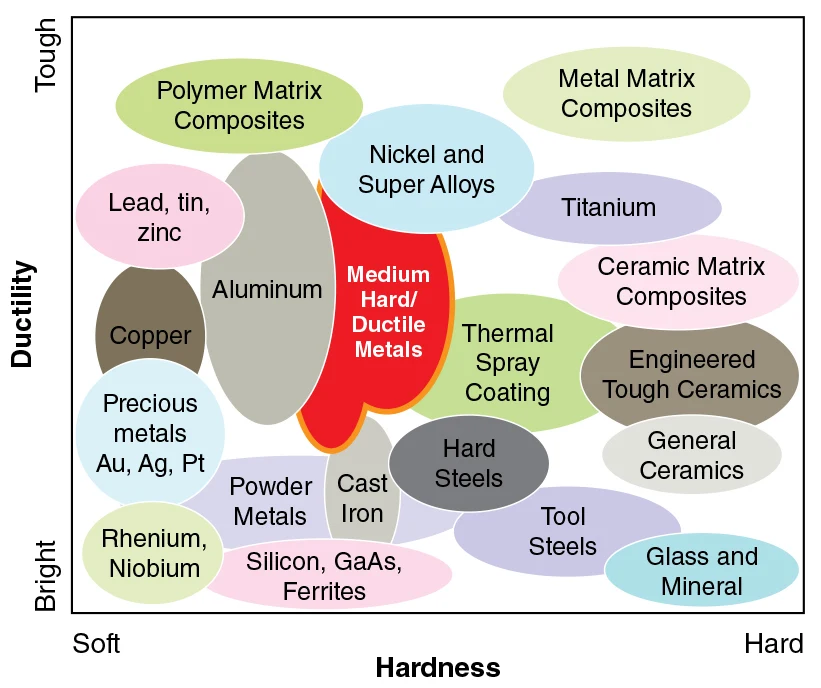
Material Hardness
Material hardness refers to how resistant a material is to deformation, scratching, or cutting. To achieve the best results when drilling into materials of varying hardness, consider the following:
-
 Hard Materials: These materials require fine diamond sizes, lower diamond concentrations, and softer bond hardness. The finer diamond sizes create more cutting edges, allowing for better penetration, while softer bonds wear away more quickly to expose fresh diamonds, which helps maintain cutting efficiency.
Hard Materials: These materials require fine diamond sizes, lower diamond concentrations, and softer bond hardness. The finer diamond sizes create more cutting edges, allowing for better penetration, while softer bonds wear away more quickly to expose fresh diamonds, which helps maintain cutting efficiency.
-
 Soft Materials: For softer materials, use coarse diamond sizes, higher diamond concentrations, and harder bond hardness. Coarser diamonds are more aggressive, and a harder bond ensures durability against softer material that doesn't cause as much wear.
Soft Materials: For softer materials, use coarse diamond sizes, higher diamond concentrations, and harder bond hardness. Coarser diamonds are more aggressive, and a harder bond ensures durability against softer material that doesn't cause as much wear.
Material Density
Material density is the mass per unit volume, indicating how compact a material is. Different density levels require specific diamond drill configurations to ensure optimal performance:
-
 High-Density Materials: Use fine diamond sizes, lower concentrations, and softer bonds. High-density materials require precision and gentle cutting, which fine diamonds and soft bonds can provide.
High-Density Materials: Use fine diamond sizes, lower concentrations, and softer bonds. High-density materials require precision and gentle cutting, which fine diamonds and soft bonds can provide.
-
 Low-Density Materials: Coarse diamond sizes, higher concentrations, and harder bonds work best. Low-density materials are easier to cut, so more aggressive drills can improve speed and efficiency.
Low-Density Materials: Coarse diamond sizes, higher concentrations, and harder bonds work best. Low-density materials are easier to cut, so more aggressive drills can improve speed and efficiency.
Material Abrasiveness
Abrasiveness refers to a material's tendency to wear down diamond drills. The more abrasive the material, the more it erodes the drill:
-
 Low Abrasiveness: Fine diamond sizes, low concentrations, and soft bonds are appropriate for less abrasive materials. These configurations minimize excessive wear while providing precise cuts.
Low Abrasiveness: Fine diamond sizes, low concentrations, and soft bonds are appropriate for less abrasive materials. These configurations minimize excessive wear while providing precise cuts.
-
 High Abrasiveness: Use coarse diamond sizes, high concentrations, and hard bonds for high-abrasive materials. Coarse diamonds resist wear better, while harder bonds offer increased durability against abrasive materials.
High Abrasiveness: Use coarse diamond sizes, high concentrations, and hard bonds for high-abrasive materials. Coarse diamonds resist wear better, while harder bonds offer increased durability against abrasive materials.
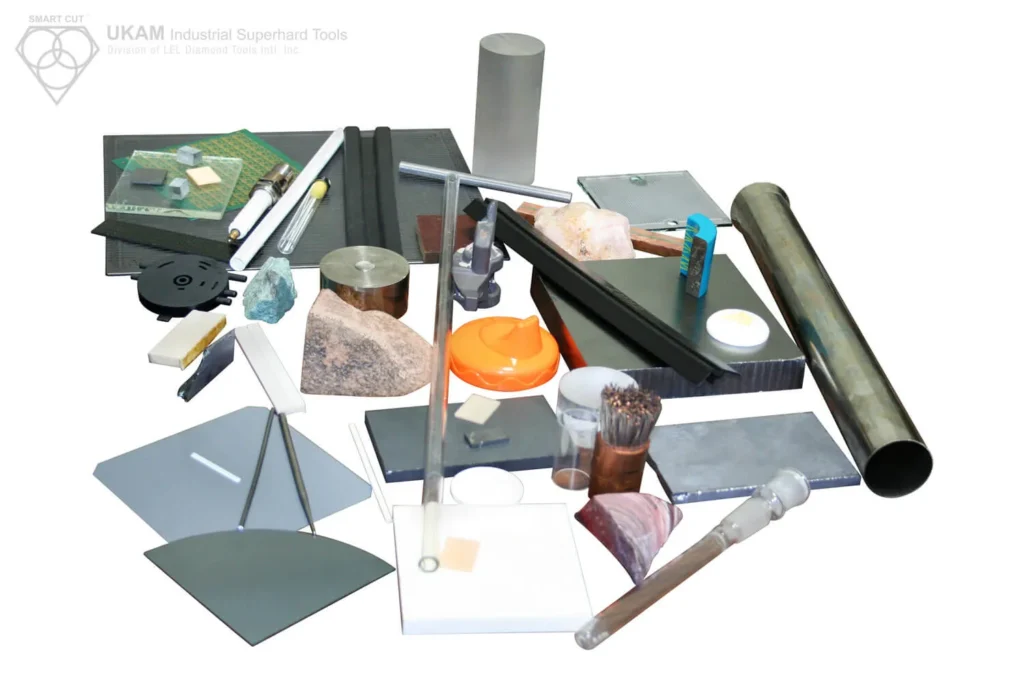
By understanding these relationships, you can better select diamond drills that align with your material's properties, leading to improved drilling performance and efficiency. Find out more about material properties >>>
Step # 2 – Diamond Drill Selection: Consider Operating Conditions
The second step in the drill selection process is to consider the effects of operating conditions on the diamond drill. Based on the table, various operating conditions can influence the behavior of a diamond drill, impacting its lifespan and cutting rate.
An operating condition that causes a diamond drill to have shorter life and a faster cutting rate is said to make the drill act softer. Conversely, a drill with longer life and a slower cutting rate is considered a harder-acting drill, indicating harder cutting action.
Effect of Operating Conditions on Diamond Drill Actions
|
Operating Condition |
Drill Action |
Effect on Diamond Drill Life |
Drilling Rate |
|---|---|---|---|
|
Machine Condition |
|||
|
Old |
Softer |
Shorter |
Faster |
|
New |
Harder |
Longer |
Slower |
|
Operating Speed |
|||
|
High |
Harder |
Longer |
Slower |
|
Low |
Softer |
Shorter |
Faster |
|
Infeed Rate |
|||
|
Fast |
Softer |
Shorter |
Faster |
|
Slow |
Harder |
Longer |
Slower |
|
Horsepower |
|||
|
High |
Softer |
Shorter |
Faster |
|
Low |
Harder |
Longer |
Slower |
|
Coolant Volume |
|||
|
High |
Harder |
Longer |
Slower |
|
Low |
Softer |
Shorter |
Faster |
|
Drilling Depth |
|||
|
Shallow |
Softer |
Shorter |
Faster |
|
Deep |
Harder |
Longer |
Slower |
After tentatively selecting a combination of drill materials based on material properties guidelines, adjustments can be made if specific operating conditions affect diamond drill hardness. The table outlines the effects of various operating conditions on the behavior of diamond drills, providing guidance for adjustments:
-
 Machine Condition: New machines generally lead to harder-acting drills with longer life and slower cutting rates, while old machines tend to result in softer drills with shorter life and faster cutting rates.
Machine Condition: New machines generally lead to harder-acting drills with longer life and slower cutting rates, while old machines tend to result in softer drills with shorter life and faster cutting rates.
-
 Operating Speed: High speeds contribute to harder-acting drills with longer life, whereas low speeds make drills softer, reducing their lifespan.
Operating Speed: High speeds contribute to harder-acting drills with longer life, whereas low speeds make drills softer, reducing their lifespan.
-
 Infeed Rate: Faster rates cause drills to act softer, while slower rates harden them.
Infeed Rate: Faster rates cause drills to act softer, while slower rates harden them.
-
 Horsepower: High horsepower can lead to softer drilling action, while low horsepower typically results in harder-acting drills.
Horsepower: High horsepower can lead to softer drilling action, while low horsepower typically results in harder-acting drills.
-
 Coolant Volume: High coolant volumes tend to make drills act harder, whereas low volumes lead to softer drills.
Coolant Volume: High coolant volumes tend to make drills act harder, whereas low volumes lead to softer drills.
-
 Drilling Depth: Shallow drilling result in softer drills, while deeper cuts tend to lead to harder-acting drills.
Drilling Depth: Shallow drilling result in softer drills, while deeper cuts tend to lead to harder-acting drills.
These guidelines help select the correct drill specifications based on operating conditions, allowing for adjustments to ensure optimal drill performance in various scenarios.
Step # 3 - Diamond Drill Selection: Considering Customer Preferences
The third and final step in the diamond drill selection process is to consider the customer's stated drill preference, if any. Drilling rate (speed) and drill life are the primary measurements most customers care about. Generally, higher drilling speeds can reduce labor costs, while longer drill life can lower overall drill costs. There is an inverse relationship between drill life and drilling rate, where an increase in drill life typically leads to a decrease in drilling speed. The most common customer preference is for a diamond drill that balances longer life and faster drilling rates.

It's the responsibility of the diamond drill manufacturer to evaluate what is more important to the customer: drill life or drilling speed, and then adjust the drill specification selection accordingly.
If drill cost is the most significant customer consideration, the initial cost of a diamond drill is mainly dependent on its diamond content (concentration). A common misconception among end users is that diamond content and performance are directly proportional, but this isn't always the case. In practice, there is an optimal number of diamond particles of a specific mesh size in a specific bond that will yield the best performance for a given application.

In many instances, lower cutting costs are achieved with lower rather than higher diamond concentrations, as higher concentrations might not cut effectively at all. Therefore, customers should focus on performance, not just diamond content.
The most significant factors in selecting a diamond drill are typically the type of material being drilled and the specific customer requirements. Manufacturers often recommend stock specifications designed to drill specific materials under typical operating conditions when no specific customer preference is indicated.
For example, a soft diamond bond with coarse diamond size and high diamond grade has been found to provide optimal performance for most alumina drilling applications. This specification is the result of extensive laboratory and field testing of various diamond drill specifications on the same material.
However, if this specification does not yield optimal performance, adjustments can be made following the general guidelines presented in earlier tables. This allows for flexibility in drill selection, ensuring customers achieve the best results for their specific applications.
Optimizing Diamond Drill Performance

For any set of application conditions, there is a combination of diamond concentration and bond that will yield optimal diamond drill performance. Identifying that ideal combination relies on several key factors:
-
 Customer Knowledge and Communication: The customer must provide accurate information about initial application conditions, drill performance outcomes, and any changes in operating conditions. Clear communication is crucial for fine-tuning the drill specifications.
Customer Knowledge and Communication: The customer must provide accurate information about initial application conditions, drill performance outcomes, and any changes in operating conditions. Clear communication is crucial for fine-tuning the drill specifications.
-
 Application Engineer's Expertise: The application engineer must be skilled at interpreting the information provided by the customer and making appropriate adjustments to optimize drill performance. This requires a deep understanding of diamond drill characteristics and their relationship with various application conditions.
Application Engineer's Expertise: The application engineer must be skilled at interpreting the information provided by the customer and making appropriate adjustments to optimize drill performance. This requires a deep understanding of diamond drill characteristics and their relationship with various application conditions.
Finding the optimal diamond drill setup can be challenging, especially in unique or complex applications. Successful initial drill tests are rare, as it often takes several iterations and adjustments from both the customer and the diamond drill manufacturer to achieve the best results.
This iterative process requires patience and collaboration. The customer should be prepared to provide detailed feedback, and the application engineer should be equipped with the knowledge and tools to analyze the data and make the necessary adjustments. Through this ongoing interaction, an optimal diamond drill configuration can be achieved, leading to improved performance and efficiency in the long run.

Application Rules for Diamond Drills
Diamond drill performance can be adjusted by altering drill materials or operating conditions. Information from previous tables implies certain application rules. Table 4 summarizes these rules, illustrating the effects of changing either drill materials or operating conditions, while keeping all other variables constant.
-
 Increasing Diamond Concentration : Higher diamond concentrations make a drill act harder. This is because more diamond particles are in contact with the material, reducing the unit pressure per particle and decreasing grain penetration depth.
Increasing Diamond Concentration : Higher diamond concentrations make a drill act harder. This is because more diamond particles are in contact with the material, reducing the unit pressure per particle and decreasing grain penetration depth.
-
 Increasing Diamond Mesh Size: Larger mesh sizes result in softer drill action. With fewer diamond particles, each particle is subjected to higher unit pressures, increasing grain penetration.
Increasing Diamond Mesh Size: Larger mesh sizes result in softer drill action. With fewer diamond particles, each particle is subjected to higher unit pressures, increasing grain penetration.
-
 Increasing Bond Hardness : Harder bonds make a drill act harder due to increased diamond holding capacity and greater abrasion resistance. This is because harder bonds can withstand higher wear, extending drill life.
Increasing Bond Hardness : Harder bonds make a drill act harder due to increased diamond holding capacity and greater abrasion resistance. This is because harder bonds can withstand higher wear, extending drill life.
-
 Increasing Machine Operating Speeds (RPM): Higher operating speeds cause a drill to act harder because each diamond particle has less contact time with the material, leading to reduced grain penetration and removing less material per revolution.
Increasing Machine Operating Speeds (RPM): Higher operating speeds cause a drill to act harder because each diamond particle has less contact time with the material, leading to reduced grain penetration and removing less material per revolution.
-
 Increasing Infeed Rates: Higher infeed rates make a drill act softer. Increased pressure causes each diamond particle to do more work per revolution, which can lead to premature diamond pull-out due to higher unit pressures.
Increasing Infeed Rates: Higher infeed rates make a drill act softer. Increased pressure causes each diamond particle to do more work per revolution, which can lead to premature diamond pull-out due to higher unit pressures.
-
 Increasing Horsepower: Higher horsepower can cause a drill to break down faster due to increased cutting pressures, resulting in premature diamond particle pull-out. Alternatively, higher horsepower allows the use of harder bonds, as dull diamond particles can cut more effectively at higher horsepower.
Increasing Horsepower: Higher horsepower can cause a drill to break down faster due to increased cutting pressures, resulting in premature diamond particle pull-out. Alternatively, higher horsepower allows the use of harder bonds, as dull diamond particles can cut more effectively at higher horsepower.
-
 Increasing Coolant Volume: Greater coolant volumes facilitate swarf removal, reducing bond wear and making the drill act harder. This can improve cooling and extend the drill's lifespan.
Increasing Coolant Volume: Greater coolant volumes facilitate swarf removal, reducing bond wear and making the drill act harder. This can improve cooling and extend the drill's lifespan.
-
 Increasing Drill Cutting Depth: Deeper cutting depths cause a drill to act harder. The increased contact area reduces the pressure per particle and grain penetration depth, which impacts the rate of material removal.
Increasing Drill Cutting Depth: Deeper cutting depths cause a drill to act harder. The increased contact area reduces the pressure per particle and grain penetration depth, which impacts the rate of material removal.
These application rules can guide the adjustment of diamond drill parameters, leading to optimal performance and efficiency for different drilling applications.
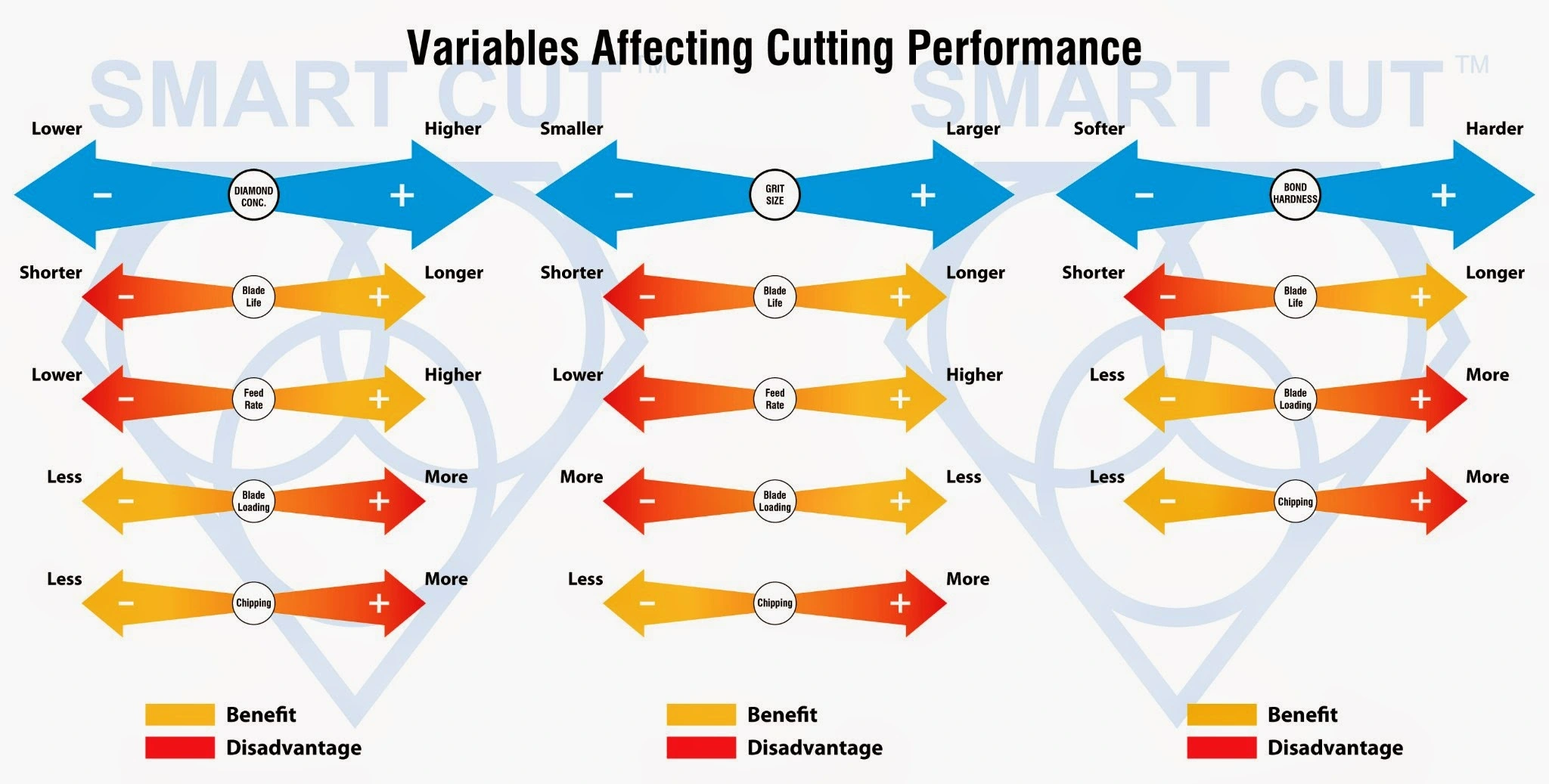
Application Rules for Diamond Drills
These are a few important rules that guide both the diamond drill manufacturer and the customer in modifying drill elements or operating conditions to optimize drill performance:
-
 Understand the Material: The first rule is to understand the type of material you are drilling and choose the appropriate diamond drill specifications. Harder materials require softer bonds, while softer materials need harder bonds.
Understand the Material: The first rule is to understand the type of material you are drilling and choose the appropriate diamond drill specifications. Harder materials require softer bonds, while softer materials need harder bonds.
-
 Adjust Operating Conditions: Changes in operating conditions can significantly impact drill performance. This includes factors like infeed rate, operating speed, and coolant volume.
Adjust Operating Conditions: Changes in operating conditions can significantly impact drill performance. This includes factors like infeed rate, operating speed, and coolant volume.
-
 Balance Drill Life and Drilling Rate: There is often a trade-off between drill life and drilling rate. To achieve optimal performance, you need to balance these two aspects based on your application requirements.
Balance Drill Life and Drilling Rate: There is often a trade-off between drill life and drilling rate. To achieve optimal performance, you need to balance these two aspects based on your application requirements.
-
 Communicate with Manufacturers: Effective communication between the customer and the diamond drill manufacturer is crucial. By providing detailed information about your application and performance expectations, the manufacturer can recommend suitable drill adjustments.
Communicate with Manufacturers: Effective communication between the customer and the diamond drill manufacturer is crucial. By providing detailed information about your application and performance expectations, the manufacturer can recommend suitable drill adjustments.
-
 Test and Iterate: Initial tests may not always produce optimal results. It's essential to be flexible and willing to adjust the diamond drill's properties and operating conditions to achieve the best performance.
Test and Iterate: Initial tests may not always produce optimal results. It's essential to be flexible and willing to adjust the diamond drill's properties and operating conditions to achieve the best performance.
These rules serve as a guideline to help both manufacturers and customers make informed decisions that lead to enhanced diamond drill performance and efficiency.
|
Operating Condition |
Effect on Drill Action |
Effect on Drill Life |
Effect on Drilling Rate |
|---|---|---|---|
|
Machine Condition |
|||
|
Old |
Drill acts softer |
Shorter life |
Faster drilling rates |
|
New |
Drill acts harder |
Longer life |
Slower drilling rates |
|
Operating Speed |
|||
|
Low |
Softer |
Reduced life |
Faster drilling rates |
|
High |
Harder |
Longer life |
Slower drilling rates |
|
Infeed Rate |
|||
|
Slow |
Harder |
Longer life |
Slower drilling rates |
|
Fast |
Softer |
Shorter life |
Faster drilling rates |
|
Horsepower |
|||
|
Low |
Harder |
Longer life |
Slower drilling rates |
|
High |
Softer |
Shorter life |
Faster drilling rates |
|
Coolant Volume |
|||
|
Low |
Softer |
Reduced life |
Faster drilling rates |
|
High |
Harder |
Longer life |
Slower drilling rates |
|
Cutting Depth |
|||
|
Shallow |
Softer |
Shorter life |
Faster drilling rates |
|
Deep |
Harder |
Longer life |
Slower drilling rates |
Machine Condition:
-
 Old: When the machine is older, the drill will act softer, resulting in shorter life and faster drilling rates.
Old: When the machine is older, the drill will act softer, resulting in shorter life and faster drilling rates.
-
 New: With a newer machine, the drill tends to act harder, providing longer life and slower drilling rates.
New: With a newer machine, the drill tends to act harder, providing longer life and slower drilling rates.
Operating Speed
-
 Low: A lower operating speed leads to a softer drill action, reducing drill life but allowing for faster drilling rates.
Low: A lower operating speed leads to a softer drill action, reducing drill life but allowing for faster drilling rates.
-
 High: A higher operating speed causes the drill to act harder, extending its life but slowing down the drilling rate.
High: A higher operating speed causes the drill to act harder, extending its life but slowing down the drilling rate.
Infeed Rate
-
 Slow: A slower infeed rate leads to a harder drill action, resulting in longer drill life and slower drilling rates.
Slow: A slower infeed rate leads to a harder drill action, resulting in longer drill life and slower drilling rates.
-
 Fast: Faster infeed rates cause the drill to act softer, shortening its life but increasing the drilling rate.
Fast: Faster infeed rates cause the drill to act softer, shortening its life but increasing the drilling rate.
Horsepower
-
 Low: With lower horsepower, the drill acts harder, leading to longer life and slower drilling rates
Low: With lower horsepower, the drill acts harder, leading to longer life and slower drilling rates
-
 High: Higher horsepower results in softer drill action, leading to shorter life and faster drilling rates.
High: Higher horsepower results in softer drill action, leading to shorter life and faster drilling rates.
Coolant Volume
-
 Low: Reduced coolant volume makes the drill act softer, which decreases its life but increases the drilling rate.
Low: Reduced coolant volume makes the drill act softer, which decreases its life but increases the drilling rate.
-
 High: Higher coolant volume causes the drill to act harder, prolonging its life but slowing down the drilling rate.
High: Higher coolant volume causes the drill to act harder, prolonging its life but slowing down the drilling rate.
Cutting Depth
-
 Shallow: A shallow cutting depth results in softer drill action, leading to shorter life and faster drilling rates.
Shallow: A shallow cutting depth results in softer drill action, leading to shorter life and faster drilling rates.
-
 Deep: Deeper cutting depths make the drill act harder, providing longer life but reducing the drilling rate.
Deep: Deeper cutting depths make the drill act harder, providing longer life but reducing the drilling rate.
By understanding these effects, you can better adjust operating conditions to optimize the performance of diamond drills.
Diamond Drill Application Rules
The following rules outline how changes in specific parameters can affect the performance of diamond drills. By understanding these rules, you can better optimize your drilling operations:
|
Factor |
Effect on Drill Action |
Effect on Drill Life |
Effect on Drilling Rate |
|---|---|---|---|
|
Diamond Concentration |
Drill acts harder |
Longer life |
Reduced drilling rate |
|
Diamond Grit Size |
Drill acts softer |
Shorter life |
Faster drilling rates |
|
Bond Hardness |
Drill acts harder |
Longer life |
Slower drilling rate |
|
Operating Speed |
Drill acts harder |
Longer life |
Slower drilling rate |
|
Infeed Rate |
Drill acts softer |
Reduced life |
Faster drilling rates |
|
Horsepower |
Drill acts softer |
Shorter life |
Faster drilling rates |
|
Coolant Volume |
Drill acts harder |
Longer life |
Reduced drilling rate |
|
Drilling Depth |
Drill acts harder |
Longer life |
Reduced drilling rate |
-
 Diamond Concentration: Increasing the diamond concentration makes the drill act harder, providing longer life but reducing drilling rate.
Diamond Concentration: Increasing the diamond concentration makes the drill act harder, providing longer life but reducing drilling rate.
-
 Diamond Grit Size: Increasing the diamond grit size makes the drill act softer, leading to shorter life but allowing for faster drilling rates.
Diamond Grit Size: Increasing the diamond grit size makes the drill act softer, leading to shorter life but allowing for faster drilling rates.
-
 Bond Hardness: Increasing bond hardness makes the drill act harder, offering longer life but slowing down the drilling rate.
Bond Hardness: Increasing bond hardness makes the drill act harder, offering longer life but slowing down the drilling rate.
-
 Operating Speed: Higher operating speed causes the drill to act harder, resulting in longer life and slower drilling rates.
Operating Speed: Higher operating speed causes the drill to act harder, resulting in longer life and slower drilling rates.
-
 Infeed Rate: Increasing the infeed rate makes the drill act softer, reducing its life but allowing for faster drilling rates.
Infeed Rate: Increasing the infeed rate makes the drill act softer, reducing its life but allowing for faster drilling rates.
-
 Horsepower: Higher horsepower causes the drill to act softer, leading to shorter life but faster drilling rates.
Horsepower: Higher horsepower causes the drill to act softer, leading to shorter life but faster drilling rates.
-
 Coolant Volume: Increasing coolant volume makes the drill act harder, extending its life but reducing the drilling rate.
Coolant Volume: Increasing coolant volume makes the drill act harder, extending its life but reducing the drilling rate.
-
 Drilling Depth: Increasing drilling depth makes the drill act harder, providing longer life but decreasing the drilling rate.
Drilling Depth: Increasing drilling depth makes the drill act harder, providing longer life but decreasing the drilling rate.

Exceptions to the general rules are not uncommon in diamond drill applications. Here's an example to illustrate these complexities:
Beyond a certain optimal point O, increasing diamond concentration can actually lead to decreased drill life. This reduction may occur because harder-acting drills require frequent dressing to maintain a satisfactory drilling action. Additionally, increased infeed pressures might be necessary to sustain acceptable drilling rates.
Similarly, increased diamond grit size beyond optimal point O can make a drill act harder. Coarser particles often do not penetrate very hard materials as effectively, resulting in reduced performance. There is a complex relationship between the number of diamond particles in a drill and the contact area of each individual particle. For example, changing from 20/30 mesh diamond to 30/40 mesh diamond at the same concentration level results in roughly three times as many diamond particles, but the contact area of each particle decreases by about one third.
While it's generally expected that harder bonds yield longer drill life, the reality is more nuanced. Factors such as material hardness, cutting rates, and infeed pressures can complicate this relationship, underscoring the need for careful consideration and application-specific testing to achieve optimal diamond drill performance.
A theory that explains the contradiction observed beyond optimum point O is that harder bonds can become more brittle and may start to break away instead of wearing down gradually. This causes shorter drill life.
Other changes in diamond drill materials or operating conditions that make a drill act harder can produce similar effects. Contradictions that arise from exceeding optimal hardness can be understood through similar theories. The accuracy of these theories is not critical when considering the diamond drill selection process, but they offer insight into why exceeding optimal points can lead to reduced performance.
When choosing diamond drills, it’s crucial to consider not only the initial specifications but also the broader context, including the behavior of the bond material under different conditions. Understanding that harder bonds can lead to brittleness and premature failure helps guide better drill selection and optimization for specific applications.

Variation
Variation is a significant factor that complicates the diamond drill selection process. Some degree of variation is normal and should be expected, encompassing various aspects of diamond drill usage, raw material composition, operating conditions, and more.
Here are some common sources of variation in diamond drill applications:
-
 Raw Material Composition: The quality and consistency of raw materials used to manufacture diamond drills can vary, impacting their performance and durability.
Raw Material Composition: The quality and consistency of raw materials used to manufacture diamond drills can vary, impacting their performance and durability.
-
 Operating Conditions: Factors like machine condition, operating speed, infeed rate, and coolant volume can fluctuate, affecting drill behavior and results.
Operating Conditions: Factors like machine condition, operating speed, infeed rate, and coolant volume can fluctuate, affecting drill behavior and results.
-
 Application Requirements: Different drilling projects have unique requirements, leading to variations in drill selection and usage.
Application Requirements: Different drilling projects have unique requirements, leading to variations in drill selection and usage.
-
 User Techniques: The way an operator handles the drill, including pressure applied and drilling angles, can introduce variation into the process.
User Techniques: The way an operator handles the drill, including pressure applied and drilling angles, can introduce variation into the process.
-
 Environmental Factors: Temperature, humidity, and other environmental conditions can affect the performance and lifespan of diamond drills.
Environmental Factors: Temperature, humidity, and other environmental conditions can affect the performance and lifespan of diamond drills.
Understanding these sources of variation is essential for optimizing diamond drill selection and achieving consistent results in various drilling applications. By accounting for these factors, both manufacturers and users can make more informed decisions that lead to improved performance and efficiency.
Diamond Components:
Origin: Where the diamonds are sourced from if using natural diamond
Friability: The tendency of diamonds to break or crumble.
Hardness: Determines cutting efficiency and durability.
Internal Structure: Composition and crystalline structure of diamonds.

Processing:
-
 Sizing: Creating uniform diamond sizes.
Sizing: Creating uniform diamond sizes.
-
 Ovalizing: Correcting diamond shapes for consistent performance.
Ovalizing: Correcting diamond shapes for consistent performance.
-
 Tabling: Sorting diamonds by size and shape.
Tabling: Sorting diamonds by size and shape.
-
 Sorting: Organizing diamonds by quality.
Sorting: Organizing diamonds by quality.
-
 Grinding: Refining diamond edges for improved performance.
Grinding: Refining diamond edges for improved performance.
Powdered Metal Components:
-
 Particle Sizes: Range of particle sizes used in the metal bond.
Particle Sizes: Range of particle sizes used in the metal bond.
-
 Particle Size Distribution: Spread of different particle sizes in the bond.
Particle Size Distribution: Spread of different particle sizes in the bond.
-
 Physical Properties: Mechanical characteristics of powdered metal.
Physical Properties: Mechanical characteristics of powdered metal.
-
 Chemical Properties: Elemental composition of the metal bond.
Chemical Properties: Elemental composition of the metal bond.
-
 Flow Rate: Flow characteristics during production.
Flow Rate: Flow characteristics during production.
Processing Components:
-
 Weighing: Ensuring correct measurements for drill composition.
Weighing: Ensuring correct measurements for drill composition.
-
 Mixing: Combining diamond and powdered metal components.
Mixing: Combining diamond and powdered metal components.
-
 Pressing Pressure: Force applied during the pressing stage.
Pressing Pressure: Force applied during the pressing stage.
-
 Processing Temperatures: Heat applied during manufacturing.
Processing Temperatures: Heat applied during manufacturing.
-
 Finished Dimensions: Final size and shape of the diamond drill.
Finished Dimensions: Final size and shape of the diamond drill.
-
 Tensioning: Ensuring proper tension to prevent warping.
Tensioning: Ensuring proper tension to prevent warping.
-
 Core Quality: Quality of the drill's core structure.
Core Quality: Quality of the drill's core structure.
-
 Hardness: Hardness of the drill bond, impacting cutting action.
Hardness: Hardness of the drill bond, impacting cutting action.
These elements contribute to the overall quality and performance of diamond drills, offering insights into their manufacturing and application.
Machine Operating Conditions for Diamond Drills
When using diamond drills, the machine's operating conditions play a significant role in determining the performance and efficiency of the drilling process. The following factors influence these conditions:
1. Machine Specifications
-
 Speed: The rotational speed of the drill affects its cutting rate and heat generation.
Speed: The rotational speed of the drill affects its cutting rate and heat generation.
-
 Feed: The rate at which the drill is fed into the material impacts drilling efficiency and wear.
Feed: The rate at which the drill is fed into the material impacts drilling efficiency and wear.
-
 Horsepower: Higher horsepower generally provides more power for drilling but can increase wear.
Horsepower: Higher horsepower generally provides more power for drilling but can increase wear.
-
 Type: The design and structure of the machine determine its suitability for different drilling tasks.
Type: The design and structure of the machine determine its suitability for different drilling tasks.
-
 Power Source: Whether the machine is electric, hydraulic, or pneumatic.
Power Source: Whether the machine is electric, hydraulic, or pneumatic.
-
 Condition: The general state of the machine, including maintenance and wear.
Condition: The general state of the machine, including maintenance and wear.
-
 Coolant Volume: The amount of coolant used to keep the drill cool and remove swarf.
Coolant Volume: The amount of coolant used to keep the drill cool and remove swarf.

2. Operator Factors
-
 Skill: The operator's experience and proficiency in handling diamond drills.
Skill: The operator's experience and proficiency in handling diamond drills.
-
 Temperament: The operator's ability to remain calm and focused during drilling operations.
Temperament: The operator's ability to remain calm and focused during drilling operations.
-
 Objectivity: The ability to assess and adjust the drilling process objectively based on feedback and performance.
Objectivity: The ability to assess and adjust the drilling process objectively based on feedback and performance.
3. Purchaser Attributes
-
 Flexibility: Willingness to adjust to different machine operating conditions and experiment with optimal settings.
Flexibility: Willingness to adjust to different machine operating conditions and experiment with optimal settings.
-
 Communicativeness: The capacity to communicate effectively with manufacturers and operators to achieve the best drilling outcomes.
Communicativeness: The capacity to communicate effectively with manufacturers and operators to achieve the best drilling outcomes.
By considering these machine operating conditions, operators and purchasers can make more informed decisions about the use and maintenance of diamond drills, leading to improved drilling performance and efficiency.
Material Being Drilled (Raw Materials) for Diamond Drills
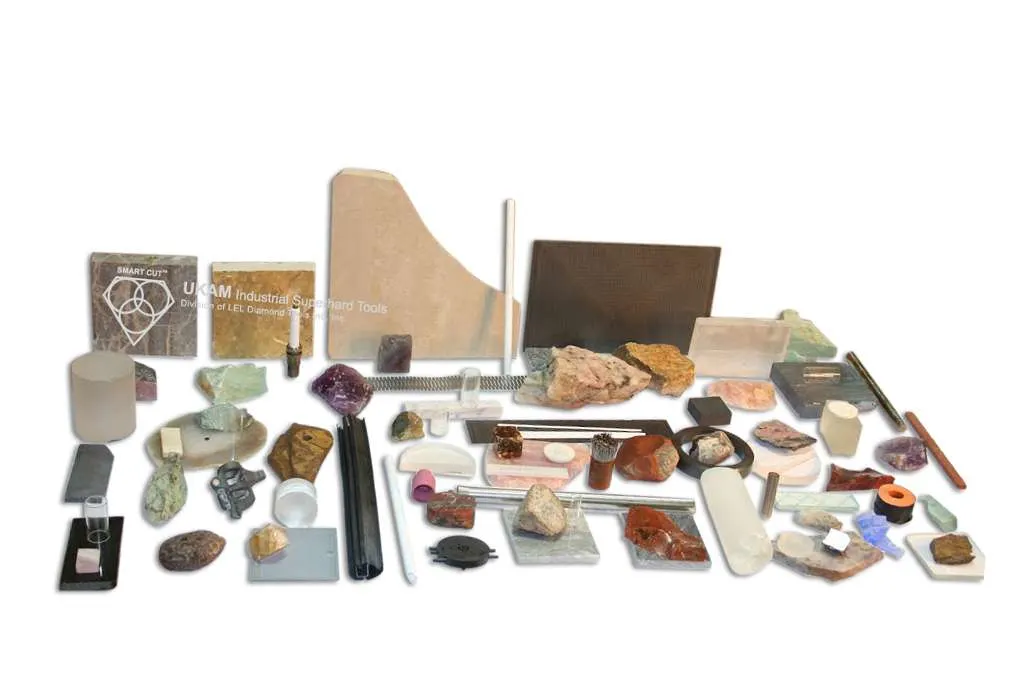
Material Properties Affect on Diamond Drill Performance
|
Material Property |
EFFECT ON DRILL ACTION |
EFFECT ON DRILL LIFE |
EFFECT ON DRILLING RATE |
|---|---|---|---|
|
Hardness |
Drill acts harder |
Shorter Life |
Reduced drilling rate |
|
Abrasiveness |
Drill acts Softer |
Shorter Life |
Reduced drilling rate |
|
Brittleness |
Drill acts harder |
Longer Life |
Reduced drilling rate |
|
Thermal Conductivity |
Drill acts harder |
Longer Life |
Increased drilling rate |
|
Fracture Toughness |
Drill acts harder |
Longer Life |
Increased drilling rate |
|
Density |
Drill acts harder |
Shorter Life |
Reduced drilling rate |
|
Chemical Composition |
Variable |
Variable |
Variable |
|
Surface Roughness |
Drill acts harder |
Shorter Life |
Reduced drilling rate |
Diamond Drill Variables Affect on RPM Recommendations

|
Variables/Attributes |
Condition |
RPM Adjustment |
|---|---|---|
|
Material Hardness & Density |
Soft, Abrasive Materials |
Increase RPM |
|
Hard, Dense Material |
Decrease RPM |
|
|
Material Thickness & Drill Depth |
Thinner Material |
Increase RPM |
|
Thicker Material |
Decrease RPM |
|
|
Thinner Drilling Depth |
Increase RPM |
|
|
Deeper Drilling Depth |
Decrease RPM |
|
|
Diamond Core Drill Wall/Kerf Thickness |
Thinner Wall/Kerf Thickness |
Increase RPM |
|
Thicker Wall/Kerf Thickness |
Decrease RPM |
Understanding the material being drilled is crucial for optimizing diamond drill performance. The following are key factors to consider in terms of raw materials and their properties:
1. Particle Properties
-
 Particle Sizes: The size of particles in the material affects drilling resistance and heat generation.
Particle Sizes: The size of particles in the material affects drilling resistance and heat generation.
-
 Particle Size Distribution: The spread of different particle sizes in the material can influence drilling behavior.
Particle Size Distribution: The spread of different particle sizes in the material can influence drilling behavior.
-
 Grog Size & Type: Grog refers to refractory material added to a clay or ceramic mix, impacting drill resistance.
Grog Size & Type: Grog refers to refractory material added to a clay or ceramic mix, impacting drill resistance.
-
 Chemical Composition: The elemental makeup of the material, which affects its reactivity and hardness.
Chemical Composition: The elemental makeup of the material, which affects its reactivity and hardness.
2. Processing Factors
-
 Weighing: Ensuring correct measurements of raw materials during production.
Weighing: Ensuring correct measurements of raw materials during production.
-
 Pressing: The process of compressing materials into their final shape, which can affect density.
Pressing: The process of compressing materials into their final shape, which can affect density.
-
 Firing: Heating the material to high temperatures to solidify it, impacting its hardness and refractoriness.
Firing: Heating the material to high temperatures to solidify it, impacting its hardness and refractoriness.
-
 Kiln Location: The position within the kiln can influence firing results and material consistency.
Kiln Location: The position within the kiln can influence firing results and material consistency.
3. Final Product Properties
-
 Tensile Strength: The material's resistance to being pulled apart, which impacts drilling durability.
Tensile Strength: The material's resistance to being pulled apart, which impacts drilling durability.
-
 Chemical Composition: Determines the material's reactivity and resistance to corrosion.
Chemical Composition: Determines the material's reactivity and resistance to corrosion.
-
 Refractoriness: The ability of the material to withstand high temperatures.
Refractoriness: The ability of the material to withstand high temperatures.
-
 Abrasiveness: The degree to which the material wears down the diamond drill.
Abrasiveness: The degree to which the material wears down the diamond drill.
-
 Hardness: A key factor in determining the required diamond drill bond hardness.
Hardness: A key factor in determining the required diamond drill bond hardness.
-
 Density: Affects the rate at which the drill penetrates the material.
Density: Affects the rate at which the drill penetrates the material.
-
 Permeability: The material's ability to allow fluids or gases to pass through, impacting coolant flow during drilling.
Permeability: The material's ability to allow fluids or gases to pass through, impacting coolant flow during drilling.
By understanding these factors, operators can choose the right diamond drills and adjust operating conditions to optimize drilling efficiency and durability.
Many factors can impact the variables listed above, and there are various methods to control and minimize these variations. Diamond drill manufacturers take extensive measures to ensure the quality of the diamonds and metal powders used, as well as to control the processing conditions that affect the performance of the finished product.
Similarly, manufacturers of raw materials that are drilled with diamond drills also have quality control standards to minimize process and manufacturing variations. Unfortunately, the drill ability of these materials is often not considered in initial raw material design and process control. For example, refractory products are closely regulated for properties like thermal conductivity, spalling resistance, and refractoriness, but their drill ability (hardness and abrasiveness) is not specifically controlled. Operating conditions are typically less controlled than either material properties or diamond drill properties. The skill and objectivity of the drill operator and the communicativeness of the purchaser can significantly affect diamond drill performance.
Overall, the manufacturing processes for diamond drills tend to be better controlled compared to other aspects of the application environment where those diamond drills are used. This disparity in control can lead to variations in drill performance, underscoring the importance of comprehensive quality control across the entire drilling process.
Effects of Product, Process, and Application Variables on Diamond Drill Performance
This normal variation curve represents a hypothetical population of diamond drill performance results for a specific application. The curve, depicted by range Rb, indicates the relative amount of variation caused by variables related to the diamond drill product itself. This could include factors like diamond concentration, bond hardness, and other manufacturing parameters.
The curve represented by range RM accounts for the variation caused by variables in the material being drilled. This can encompass a wide array of characteristics, such as material hardness, density, abrasiveness, and chemical composition.
Range Ro represents the variation in performance results due to fluctuations in operating conditions. These can include factors like machine speed, infeed rate, coolant volume, and operator skill.

The goal here is not to absolve diamond drill manufacturers of all responsibility for application variations, but rather to reflect the collective experience of diamond drill manufacturers regarding the factors that most commonly contribute to performance variability.
Understanding these different sources of variation can help both manufacturers and users better manage and control the performance of diamond drills in various applications. By considering product, process, and application variables, it is possible to minimize performance variability and achieve more consistent drilling results.

Addressing Application Issues Caused by Variability in Diamond Drill Performance
One of the most challenging tasks an application engineer faces is resolving application issues caused by variability. For instance, in drilling a particular material, an average of 500 holes per diamond drill is considered typical.
Figure 1 presents a frequency distribution curve showing the average and range of performance for a specific hypothetical application.
A diamond drill represented by point A achieved only 350 holes. The user of this drill may be dissatisfied and request a credit or replacement, feeling that the performance was subpar. However, it's important to understand that this drill's life span, though below average, is not out of the ordinary and still falls within the normal distribution curve. When using this specific diamond drill, the user experienced all the variables mentioned earlier, which can lead to performance fluctuations. Therefore, a credit or replacement may not be warranted, despite the customer's frustration.
This issue arises frequently, and it's the responsibility of the application engineer from the diamond drill manufacturer to explain to the disappointed end user that a 350 holes performance level, while on the lower end, is still within expected variability. In these discussions, it's important to highlight that other drills, represented by point B, may perform well above average, providing a more balanced perspective on the expected range of performance.
In these scenarios, open communication and clear explanations help end users understand that performance variations are normal and that each drill's performance can be influenced by numerous factors. This can lead to more realistic expectations and a better understanding of the factors affecting diamond drill performance.
Addressing Poor Diamond Drill Performance and Collaboration
If a diamond drill provides only 200 holes, as indicated by point C, this would fall outside the normal distribution curve, suggesting unusually poor performance. There could be multiple reasons for this deviation. In statistics, this is known as an "assignable cause," and identifying and correcting it can be a complex task. Many customers logically conclude that there is a problem with the diamond drill. However, this might not always be the case. In these circumstances, it's crucial for both the customer (end user) and the diamond drill manufacturer (supplier) to approach the issue with an open mind to find a resolution. Collaboration between the drill manufacturer and the user can lead to a better outcome, rather than approaching the issue as adversaries.

A lack of cooperation from the end user with the drill manufacturer can be costly. Valuable information may be lost if the end user fails to communicate complete drill application information to the manufacturer.
Manufacturers can assist by providing important recommendations for changing operating conditions or usage parameters. In some cases, they might offer a different drill specification that more closely matches the customer's application parameters.
It's important for customers to understand that manufacturers don't rule out diamond drill variability as a cause of poor performance, but it's quite rare. Most diamond drill manufacturers maintain detailed records documenting the manufacturing and quality control processes at every stage.
Each batch and individual drill produced is often assigned a serial number, allowing manufacturers to trace the entire manufacturing process for each specific drill. This information is frequently reviewed when investigating claims of poor drill performance.
When customers experience poor drill performance or variability, they often assume that the tool (the diamond drill) is at fault. However, they rarely consider other factors, such as material variations or changes in operating conditions, which might be contributing to the problem.
By fostering open communication and collaboration, both the diamond drill manufacturer and the customer can work towards a more accurate understanding of the issue, leading to effective solutions and enhanced performance.

Designing Diamond Drill Tests
Rarely does the first diamond drill specification recommended by a manufacturer achieve the optimized level of performance desired by the customer. Even if the initial specification seems to hit the target, subsequent drills may not perform at the same optimized level. This is why results from a single drill test are not typically valid. It is recommended to test several drills of the same specification to establish an average and a range of performance results before adjusting the specification for optimal outcomes.
It's in the customer's best interest to test as many drill specifications and their variations as possible to establish a performance benchmark, which can serve as a reference point for evaluating all other drills.
When conducting field tests, the end user should aim to control operating conditions and material specifications as much as possible to minimize diamond drill performance variation. Laboratory tests often use statistical methods such as randomized or multiple drill designs to minimize the impact of all variables that might cause variation, except for those being specifically evaluated.
Testing multiple drill specifications under controlled conditions helps establish a more reliable set of data, allowing both manufacturers and customers to make more informed decisions about the optimal specification for a given application. This approach ensures a more consistent and reliable outcome when using diamond drills.
Controlling and Minimizing Variation in Diamond Drill Laboratory Testing
To control and minimize variation in a laboratory testing environment for diamond drills, certain methods can be used. These methods help ensure consistency and reliable results:
-
 1. Automatic Drilling Equipment: When possible, use automated drilling equipment that operates at a constant surface speed, infeed pressure, and power consumption. If manual operation is required, specify amperage levels, and closely monitor the operator's technique to ensure consistent movements and pressure during drilling.
1. Automatic Drilling Equipment: When possible, use automated drilling equipment that operates at a constant surface speed, infeed pressure, and power consumption. If manual operation is required, specify amperage levels, and closely monitor the operator's technique to ensure consistent movements and pressure during drilling.

-
 2. Consistent Material Selection: To reduce variation, use consistent and carefully controlled material samples. We recommend purchasing a large lot of material to represent a comprehensive range of drilling properties for a given application. This approach minimizes piece-to-piece variation when selecting individual samples at random. Additionally, to reduce material hardness variation, select material from different locations and drill at various points to ensure comprehensive coverage.
2. Consistent Material Selection: To reduce variation, use consistent and carefully controlled material samples. We recommend purchasing a large lot of material to represent a comprehensive range of drilling properties for a given application. This approach minimizes piece-to-piece variation when selecting individual samples at random. Additionally, to reduce material hardness variation, select material from different locations and drill at various points to ensure comprehensive coverage.
-
 3. Randomized Variable Testing: When evaluating one or several variables—such as diamond mesh size, bond hardness, or concentration—in a single test, select the drill specification combinations at random. Use a random sequence in which a few cuts are made with each combination of variables, then switch to another random sequence. This helps minimize variations caused by factors like operator fatigue, changing weather conditions, power source fluctuations, or machine condition changes.
3. Randomized Variable Testing: When evaluating one or several variables—such as diamond mesh size, bond hardness, or concentration—in a single test, select the drill specification combinations at random. Use a random sequence in which a few cuts are made with each combination of variables, then switch to another random sequence. This helps minimize variations caused by factors like operator fatigue, changing weather conditions, power source fluctuations, or machine condition changes.
By following these methods, you can significantly reduce variation in diamond drill laboratory tests, leading to more accurate and reliable results. Proper testing procedures ensure that both manufacturers and customers gain valuable insights into optimal diamond drill performance, facilitating informed decision-making and improved drilling outcomes.
Predicting Diamond Drill Performance Results
Customers often ask diamond drill manufacturers to predict performance outcomes, such as "How many holes will this drill make?" or “How many parts will this dril?” Unfortunately, there isn't a straightforward answer to this question. It requires considerable time and patience to explain the many possible variations that affect diamond drill performance.
Why can't performance results be more accurately predicted?
Different customers may achieve varying levels of drill life or chipping on the same material and application. Although operating conditions and materials might seem identical, the results can differ due to subtle variations in factors like machine condition, infeed rates, or even operator skill. Any estimate provided by the drill manufacturer could be interpreted by the customer as a commitment or a performance guarantee, which is unrealistic and may discourage objective testing. This approach can undermine the benefits that rigorous testing offers to both the customer and the manufacturer.
Due to the inherent variability in diamond drill performance, the best approach is to conduct thorough testing under a variety of conditions to establish a range of expected outcomes. This allows both manufacturers and customers to better understand the factors that contribute to performance variations, leading to more informed decisions and improved performance expectations.

Making accurate predictions about drill life or performance is difficult.
Manufacturers can offer general guidelines based on testing and past experience, but these are not guarantees. Providing specific estimates can lead to misunderstandings, where customers might view them as commitments or performance guarantees.
To address this challenge, manufacturers typically recommend thorough testing under controlled conditions. By testing multiple drills across various applications, customers can establish a baseline of expected outcomes, allowing them to gauge performance more accurately. This approach encourages objective testing and reduces the likelihood of unrealistic expectations.
For manufacturers, this also serves as an opportunity to gather more data on how their products perform under different conditions. This information can be used to refine manufacturing processes, improve quality control, and offer more accurate recommendations to customers in the future.

ARE YOU USING RIGHT DIAMOND CORE DRILLS & TOOLS
FOR YOUR APPLICATION?
LET US
HELP YOU
HAVING ISSUES WITH
YOUR CURRENT DIAMOND CORE DRILLS & TOOLS?
Knowledge Center
Select right Diamond Drill for your application
How to Properly Use Precision Diamond Drills
Diamond Drills Guide
Diamond Tools Guide – Selecting Right Drills & Tools for your application
Optimizing your Diamond Drilling Operation
Micro Drilling Guide
Selecting Right Drilling Equipment for your Application. What you features & functionality you should look for?
Diamond Core Drill & Drill Trouble Shooting Guide
Understanding & Calculating Return on Investment for Diamond Core Drills & Other Tools
Understanding Tradeoffs – Searching for Perfect Diamond Drill & Tool
Why Use Diamond Drills?

Ayan Sadyk is a materials scientist and process engineer with over two decades of experience in the industrial diamond tooling sector. His expertise lies in integrating ultra-thin diamond blades, CBN wheels, and advanced cutting systems into precision manufacturing workflows for applications in optics, semiconductors, and technical ceramics.
With a background in materials behavior and surface integrity, Mr. Sadyk brings a data-driven, application-specific approach to cutting and grinding process development. He has worked closely with manufacturers and R&D facilities across Eastern Europe, North America, and the Middle East, helping optimize tool life, surface finish, and process stability.
As an author, he focuses on bridging materials science with tooling innovation—writing on topics such as blade wear mechanisms, thermal effects in hard material sectioning, and adaptive process design.

Ayan Sadyk is a materials scientist and process engineer with over two decades of experience in the industrial diamond tooling sector. His expertise lies in integrating ultra-thin diamond blades, CBN wheels, and advanced cutting systems into precision manufacturing workflows for applications in optics, semiconductors, and technical ceramics.
With a background in materials behavior and surface integrity, Mr. Sadyk brings a data-driven, application-specific approach to cutting and grinding process development. He has worked closely with manufacturers and R&D facilities across Eastern Europe, North America, and the Middle East, helping optimize tool life, surface finish, and process stability.
As an author, he focuses on bridging materials science with tooling innovation—writing on topics such as blade wear mechanisms, thermal effects in hard material sectioning, and adaptive process design.




